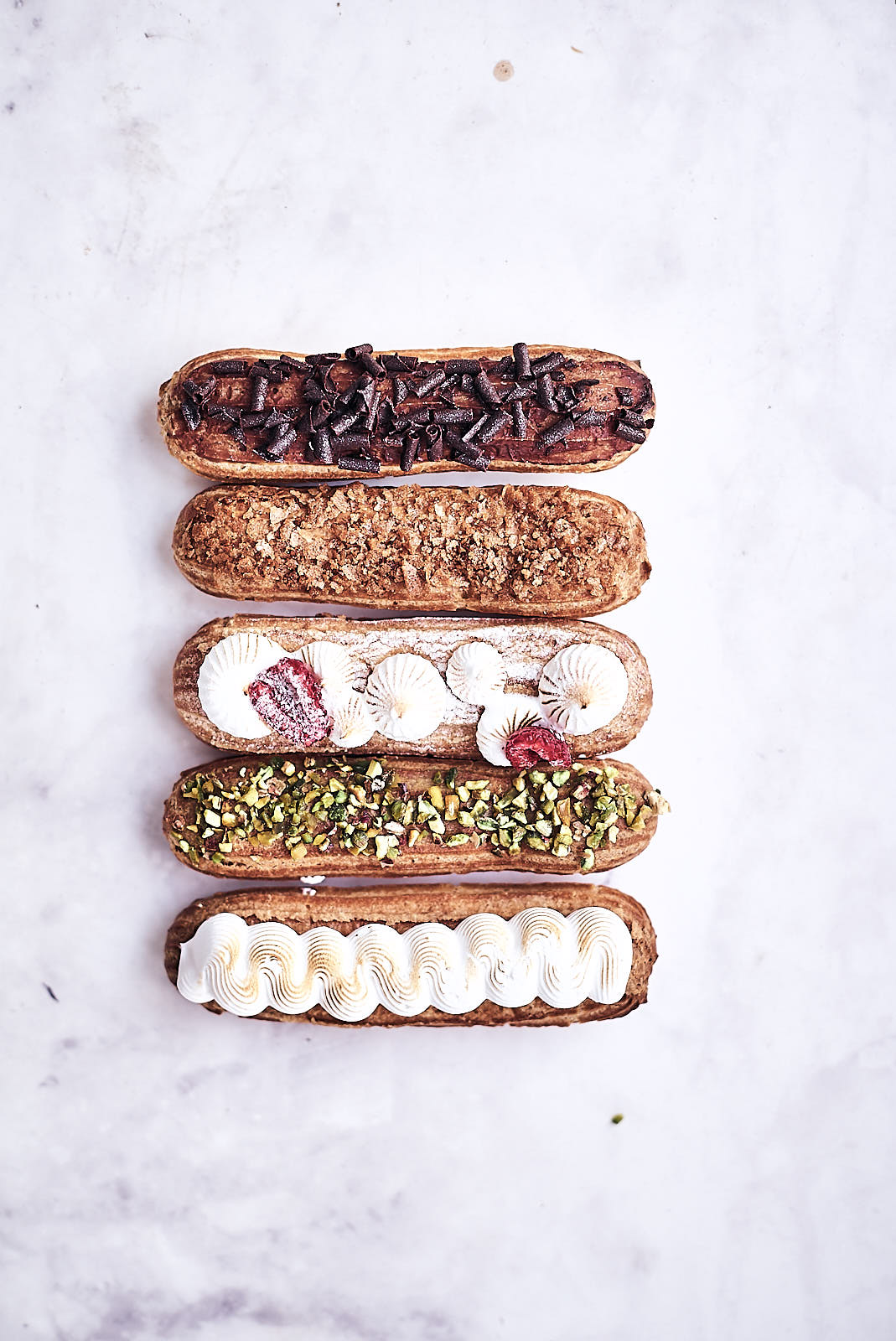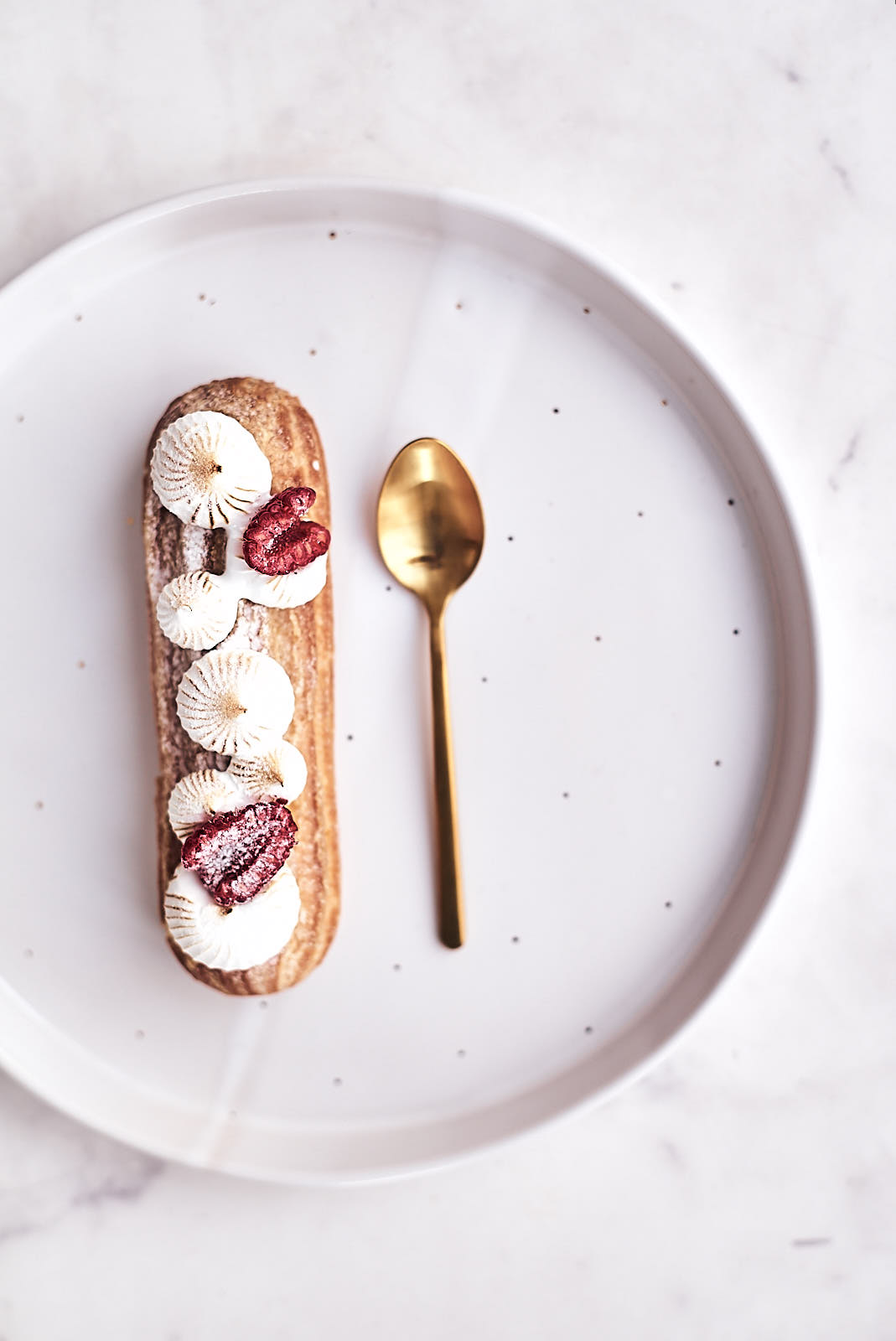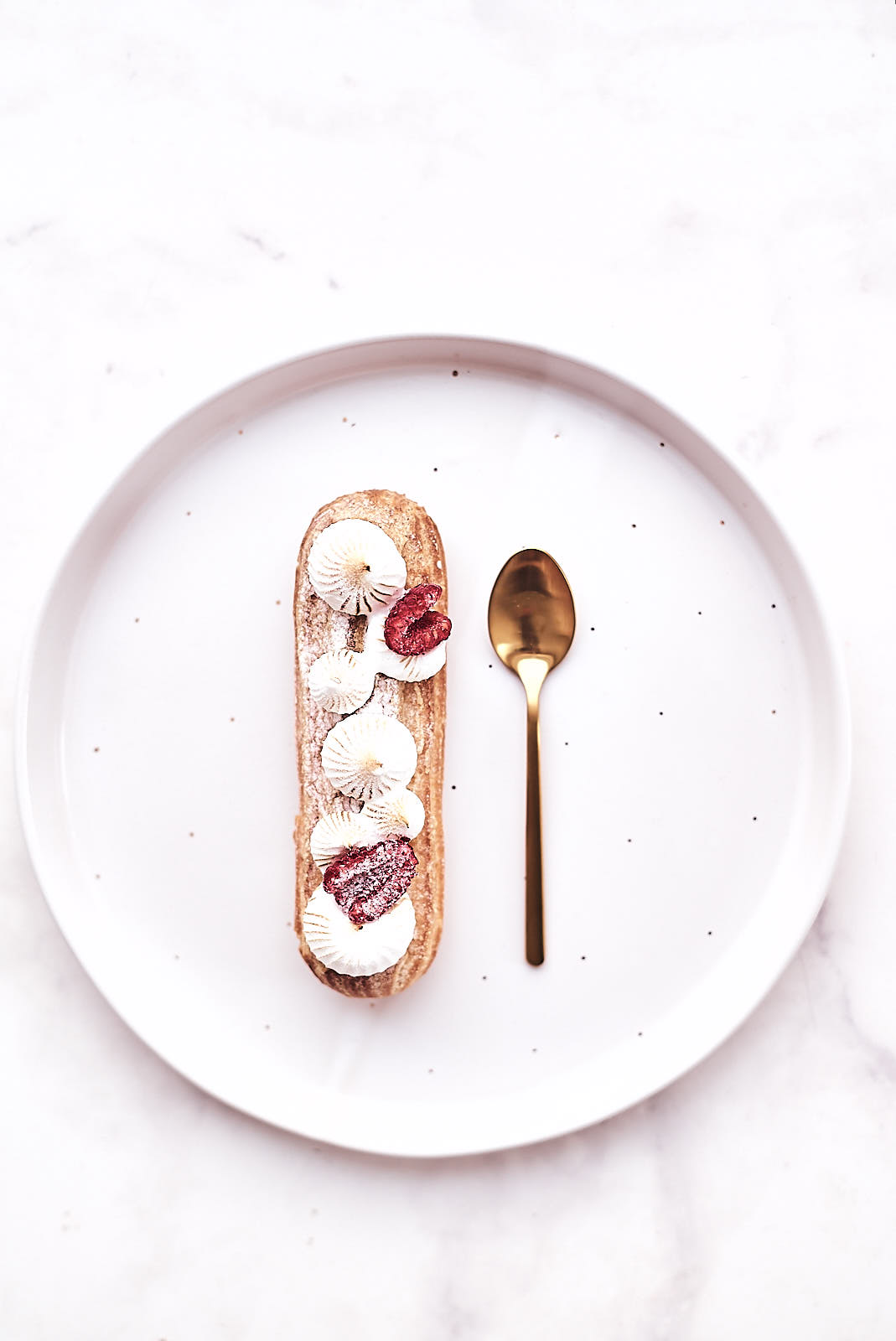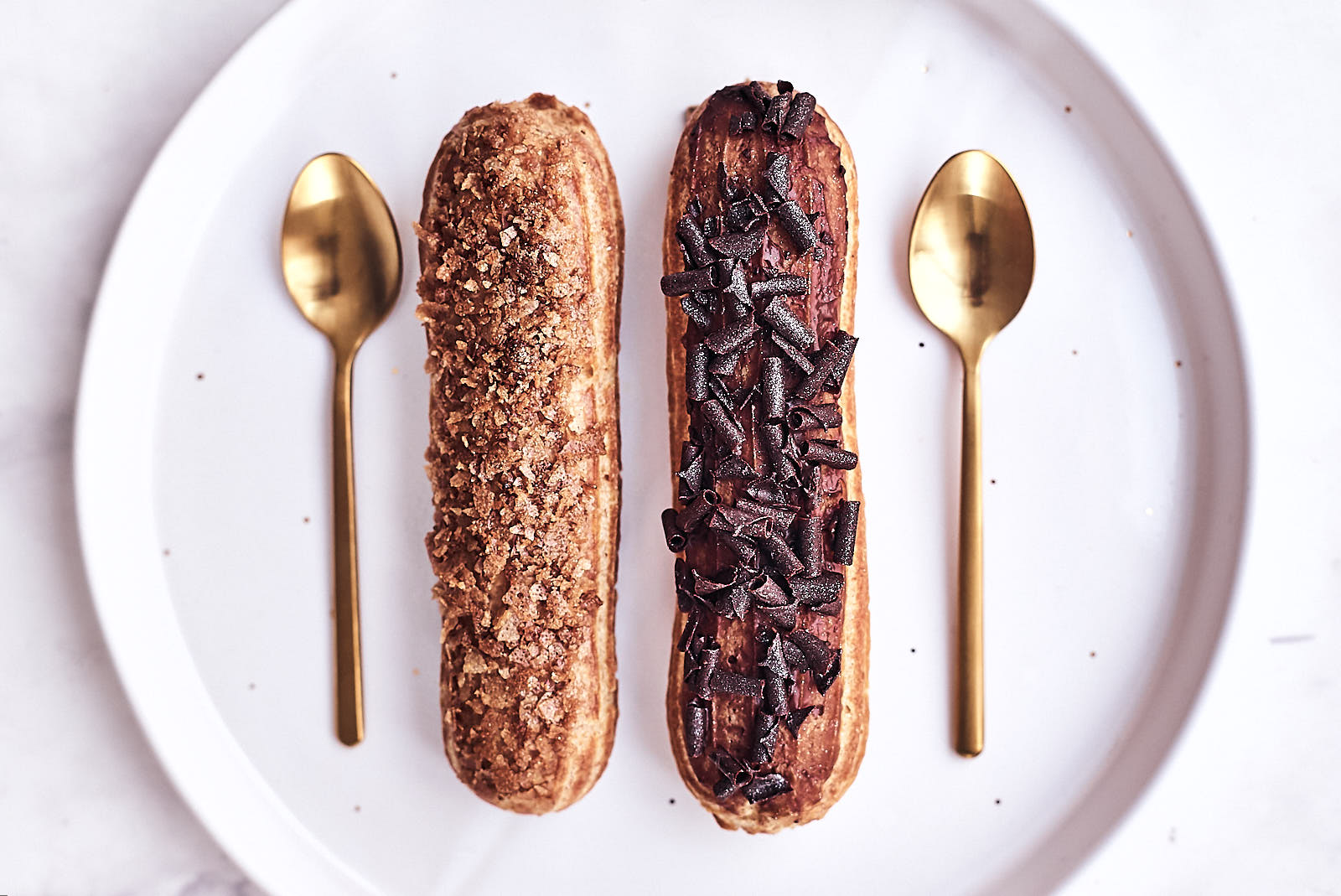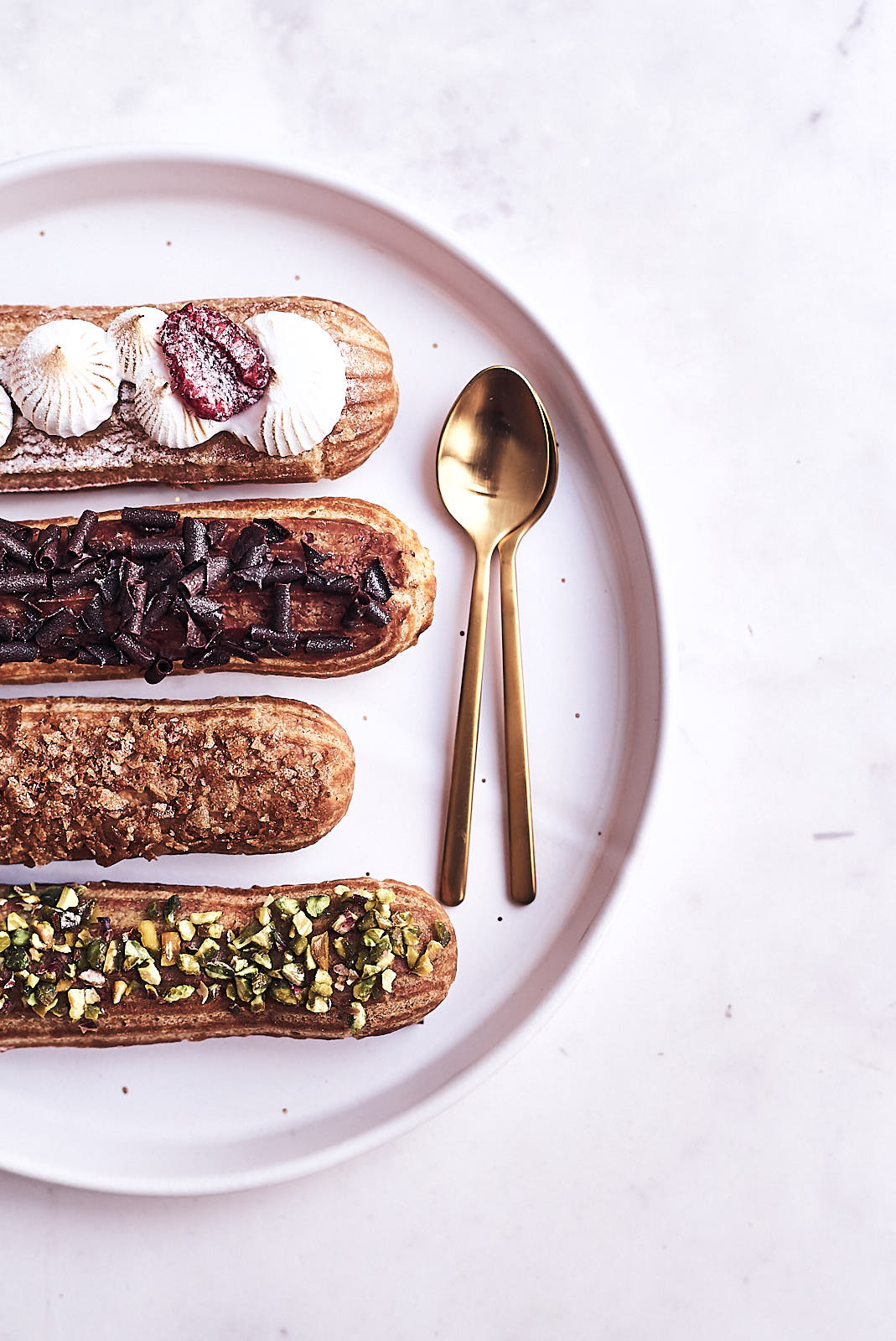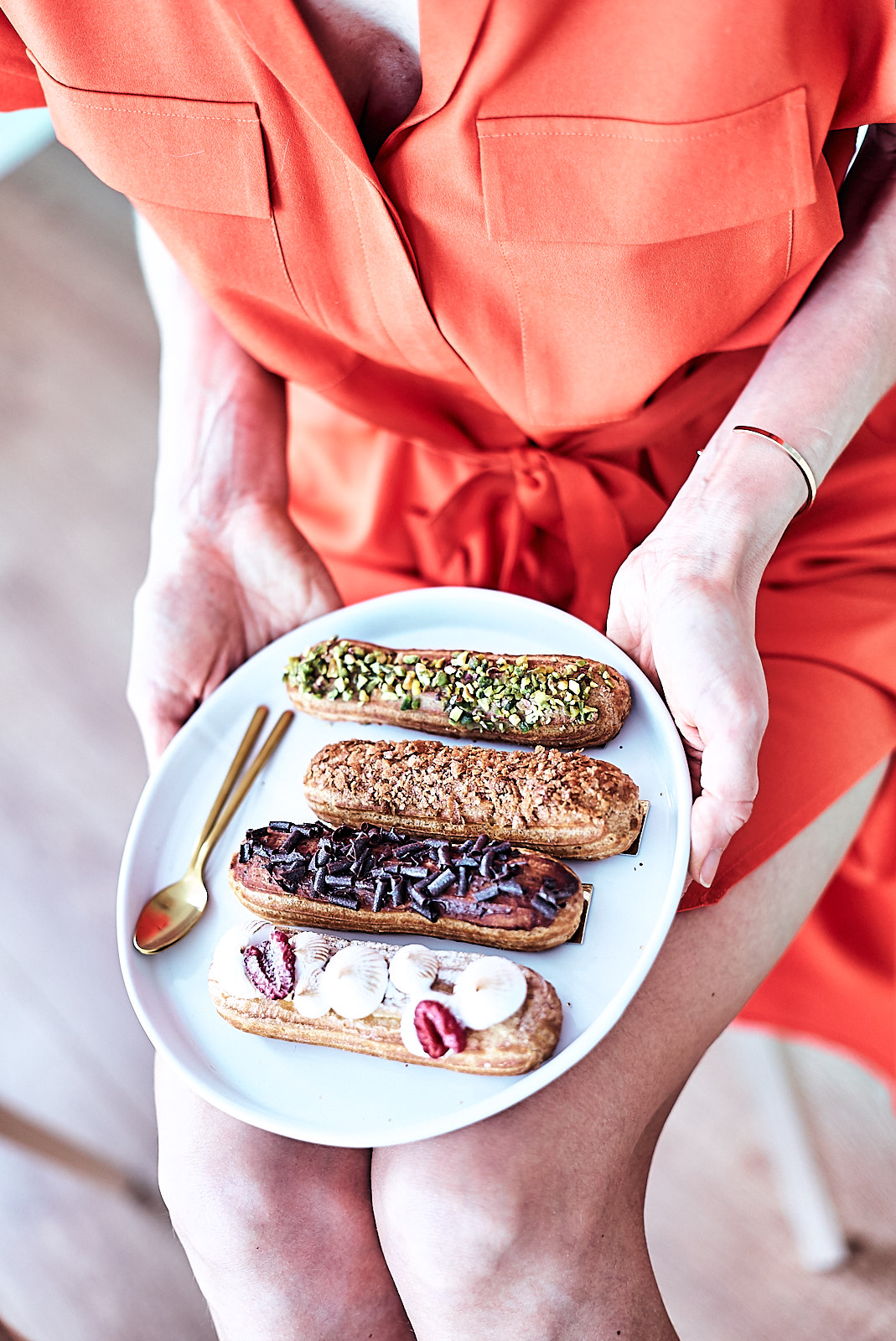The rise of the éclair
It was not to long ago when all you heard about was ‘macaron’. You went to Paris and it was a must to stop by Laduree or Pierre Hermes. You went to London and no matter how great their local food was, you searched for best macaron. You did the same in New York, San Francisco and even in Italy, where they don’t care about the macaron (and why should they?). A macaron was one of those things that just won over everything else. Then there was sourdough bread and croissants and the ‘cruffin’ and ‘cronut’ (have tried them both), but no one talked about the éclair.
It is interesting how you can find so much information about so many dishes and ingredients, but there is so little about the éclair. There is not even a real definition for the éclair. The one thing most people agree on is – translated from French, it means flash lightning. The debate starts here again – was it given this name because “the éclair is eaten in a flash” or because “it sparkles when coated with fondant icing” (like it used to).
Although we believe that the éclair is something super ancient, the truth is it originate round the 19th century after Marie-Antoine Carême started working in a patisserie near the Palais Royal in 1798, later becoming the star chef working for royalty. Historians believe he invented éclairs, together with the famous Charlotte cake and mille feuille. The Oxford English Dictionary says that the word éclair was first used in the English language around 1861, and the first published recipe appeared in the Boston Cooking School Cook Book by Mrs D.A. Lincoln in 1884.
It was not long ago when éclairs started their march of fame all over the world. (Although we Latvians tend not to accept the new so easily, this was one thing that caught on very quickly). One might argue about where it all started, but most would agree that it started in Paris with famous Christophe Adam and his boutique-like shop L’Éclair de Génie. For classicists, the new concept was something unimaginable, especially because of its look. Gone were the éclairs filled with chocolate, vanilla or coffee cream and topped with fondant, chocolate or coffee cream. Something new arrived – 60 varieties filled with everything and in every way, topped with everything and in every way. It wasn't just about the chocolate éclair, it was about the single original chocolate éclair.
After Paris came New York. With all the great French chefs opening their restaurants there, for a while they missed showing the world something so important – the éclair – and thank God that there was, I would say, an explosion of French bakeries in New York. Although there were French bakeries for at least 30 years, the big boom happened in the 1910s. Thanks to names like Eric Kayser, Dominique Ansel, Danile Boulud Epicerie Boulud and Mille-Feuille bakery by Olivier Dessyn, éclairs became something more than just a simple pastry to eat. They became works of art: they were filled with mango, raspberry, matcha, apple pie and caramel filling, just to name a few.
People all over the world have started to appreciate the great mixture of airy, crispy pastry filled with not too sweet, yet so perfectly smooth cream (be it crème patisserie or lemon curd). And that's not all – there are always decorations, as colorful as nature. But there is always the question, what is a good éclair? How can you see the difference between something that is called an éclair, but is far from that, and what IS a proper éclair?
Anatomy of an éclair
A great éclair has a few simple guidelines that you should see and taste and feel:
mastering pâte à choux *shell – it must be golden brown, crispy, crunchy, thin
shape – evenly straight from one end to another (yes, you can make an even éclair from one side to another).
sweetness – there are many ways to fill the éclair, but one of the rules they teach in French schools is – the sweetness of the overall pastry should not be more that 40%.
glaze – it must be shiny, with a clear separation between the place where the glaze ends and the pastry is visible again.
texture – it must be served sooner that later so that there is still a distinction between the crunchy exterior and soft interior. If left to stand too long or overnight, it will be soggy (sometimes that is ok and you don't have to throw it out, but for maximum pleasure, the first day is the best).
Of course, anyone can bake éclairs, but not everyone can bake a good éclair. It does not take only passion to make one. It takes years of training, experimenting and understanding. It takes precision and the best ingredients to master the best éclair.
* Pâte à choux
To understand the éclair, you have to understand that it starts with pâte à choux (choux pastry) and although, as written in ..... book by ....., it is a forgiving dough (if you pipe it out ugly, you can gather the dough back together, put it in a piping bag and do it again), you still have to make it right and that takes lots of practice. Choux pastry is made with just few ingredients – a mixture of water and milk (some use just one, but as is noted in many, many recipes, the best result is when you add both), salt, sugar, flour and eggs. As is with every recipe that has just a few ingredients, it all starts with the best ingredients for the best taste. After that, there are various ways to make it. Although, it is not hard and anyone can do it, it is still something you have to learn and master so that the dough does not become soggy, rises well, has holes, is thin and crunchy, etc.
Some tips and tricks to keep in mind by Julija Balicka, owner and pastry chef at patisserie Bel etage (who studied in France and Spain and made many, many éclairs):
length should be about 14 cm;
weight of the éclair depends on the filling inside;
choux pastry is always made with the same ingredients and should be neutral in taste so it doesn't not influence the taste of the filling;
water in the choux pastry can be substituted partially or 100% with milk. Milk brings a certain a certain to the éclair;
use a piping bag when forming the éclair. Nowadays, it is no problem to buy piping bags, and the result will be much better that trying to customize your own;
the main enemy of the dough is moisture. Make sure, you mix the water, milk, butter and flour well in the pot. It can take up to 3 min to incorporate the moisture;
do not bake éclairs on the convection setting! Use the upper and lower heating elements;
do not bake at high temps. Preheat the oven to 180-185° C but bake at 160-165° C. Bake until they are a rich brown color! Time depends on your oven;
If you can not obtain the smooth surface of the éclair, use the crunchy layer on top when baking (pâte sucrée);
Heavy, butter based creams are a thing of the past. Creams are based on pastry creams (crème pâtissière);
Do not boil pastry cream too long; lack of moisture makes the cream dry. I would suggest, bring the cream to boil and then stop.
Story and pictures: Signe Meirane
Camera: Sony Alpha 7s


